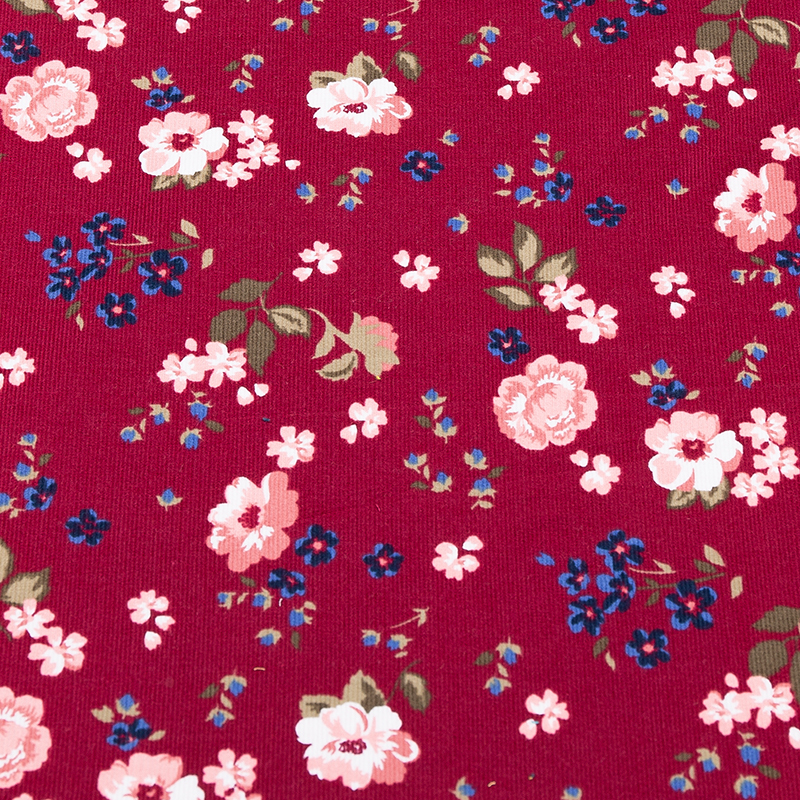Corduroy fabric, with its distinctive ribbed texture and durable nature, has undergone a fascinating evolution throughout history, adapting to changing fashion trends, technological advancements, and shifting consumer preferences.
Historical Roots and Practical Utility
Corduroy's origins can be traced back to ancient Egypt, where textiles with a ribbed structure akin to modern corduroy were woven. However, it was during the Industrial Revolution in Europe that corduroy gained prominence as a practical fabric. Its durability and warmth made it ideal for workwear and uniforms, catering to laborers and military personnel alike. The fabric's robust nature and ability to withstand rugged conditions earned it a reputation for reliability in various industries.
Fashion Renaissance and Cultural Movements
By the 20th century, Corduroy Fabric began to transcend its utilitarian roots and found itself in the midst of fashion renaissance. It became synonymous with casual elegance and was embraced by various cultural movements. In the United States, corduroy gained popularity among Ivy League students, who integrated it into their preppy style as trousers and blazers. Across the Atlantic, the mod movement in the UK during the 1960s adopted corduroy as a symbol of youthful rebellion, further cementing its place in mainstream fashion.

Versatility in Apparel and Beyond
Corduroy's evolution from workwear to fashion staple was marked by its versatility. It transitioned effortlessly from trousers and jackets to skirts, hats, and even accessories. Its distinct texture and warmth made it a preferred choice for fall and winter wardrobes, offering comfort without compromising on style. Corduroy also made its mark in formal wear, adding a touch of sophistication to tailored suits and blazers.
Expansion into Home Furnishings
Beyond apparel, corduroy found new applications in home furnishings and upholstery. Its plush texture and durability made it an ideal choice for furniture covers, cushions, and curtains. Corduroy's ability to add warmth and texture to interiors contributed to its enduring popularity in home decor, where it continues to evoke a sense of comfort and classic charm.
Modern Innovations and Sustainable Initiatives
In the contemporary fashion landscape, corduroy has not only maintained its appeal but also evolved with technological advancements. Innovations in weaving techniques allow for variations in pile thickness and patterns, enhancing its aesthetic appeal and tactile quality. Moreover, the advent of eco-friendly practices has spurred the production of organic and sustainable corduroy, catering to environmentally conscious consumers.
The evolution of Corduroy Fabric reflects its journey from practical workwear to a versatile textile cherished in fashion and home decor. Its enduring appeal lies in its distinctive texture, durability, and ability to adapt to diverse styles and preferences. As fashion continues to evolve, corduroy remains a timeless classic, bridging the gap between utility and style with effortless elegance.
Whether worn as trousers on a crisp autumn day or adorning a cozy sofa in a living room, corduroy continues to weave its way through fashion history, embodying resilience, comfort, and timeless sophistication.



 English
English Español
Español Jul 04,2024
Jul 04,2024














 +86-519-86503571
+86-519-86503571
 Phone: +86-13218666905
Phone: +86-13218666905 Tel: +86-0519-86503571
Tel: +86-0519-86503571 Fax: +86-0519-86508551
Fax: +86-0519-86508551 E-mail:
E-mail: 